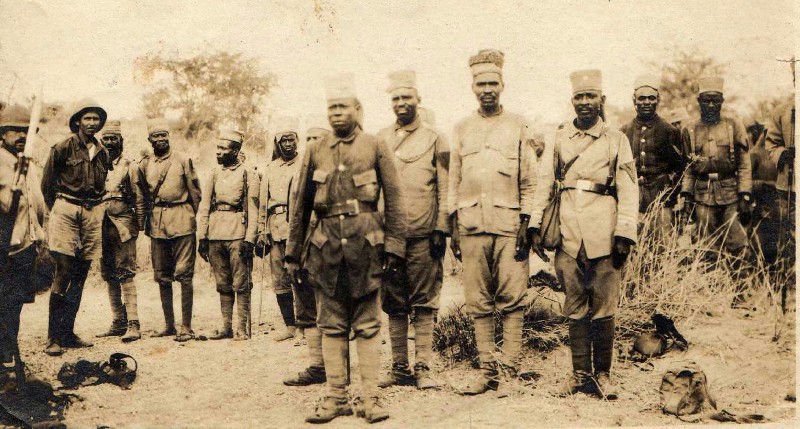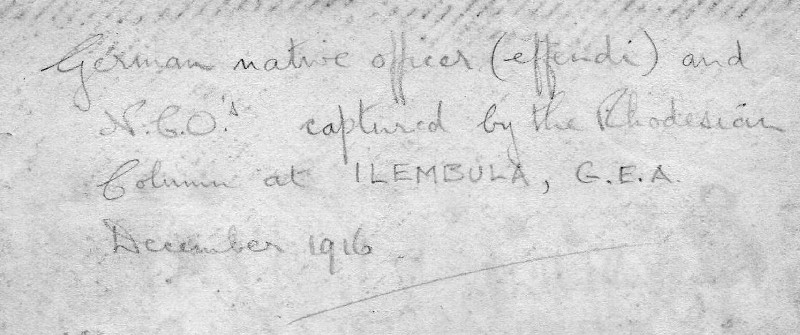|
Captured German East African
Schutztruppe Askaris 1916
Photo © Chris Wood

This photograph shows German East
African Schutztruppe askaris captured by British Rhodesian troops during the
First World War at Ilembula, December 1916.
In the centre foreground is an
Askari Officer or Effendi. He is distinguished by wearing a pocketed tunic with
turn back cuffs. It is the |Schutztruppe 1896 khaki uniform usually worn only by
German officers and NCOs but worn by Effendi without the blue piping or shoulder
straps. This particular tunic seems too big for the wearer. It is possible that
he inherited it from a fallen Effendi when he was promoted.
Behind the Effendi are four NCOs
(only three of whom can be clearly seen from this angle). They all wear NCO rank
chevrons in red on the upper left sleeve. The on the right also has
marksmanship award bars on his cuffs.
Behind them are the rank and file
askaris. Similar to the NCOs, most still have their original khaki uniforms and
tarbushes although some are in battered shape and none wear the eagle on their
tarbushes anymore. Some wear uniforms with pockets or of a darker shade which
may have been made in the colony or captured.
The askaris have been disarmed and
some of their equipment lies scatted on the ground, including ammunition pouches
on the left and knapsacks on the right. They most still wear waist belts with
plain askari belt buckles although the Effendi has an officers open buckle.
The Rhodesian troops on the far left
wear a mixture of British khaki tropical uniform and Wolseley tropical helmets.
As can be seen it would be very hard to tell them from Schutztruppe officers of
the period. The soldier on the edge of the photograph has a Lee Metford or Long
Lee Enfield rifle with its 1888 pattern bayonet.

The handwritten caption on the back of the
photograph
|